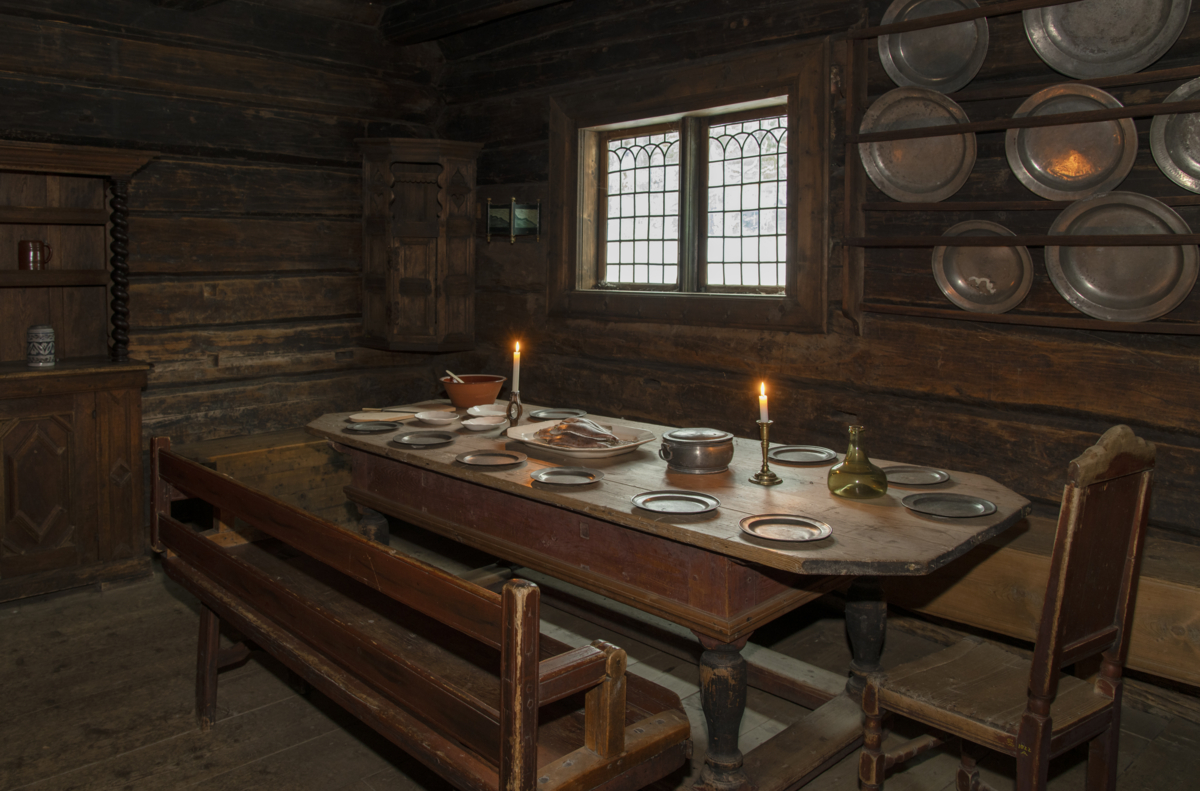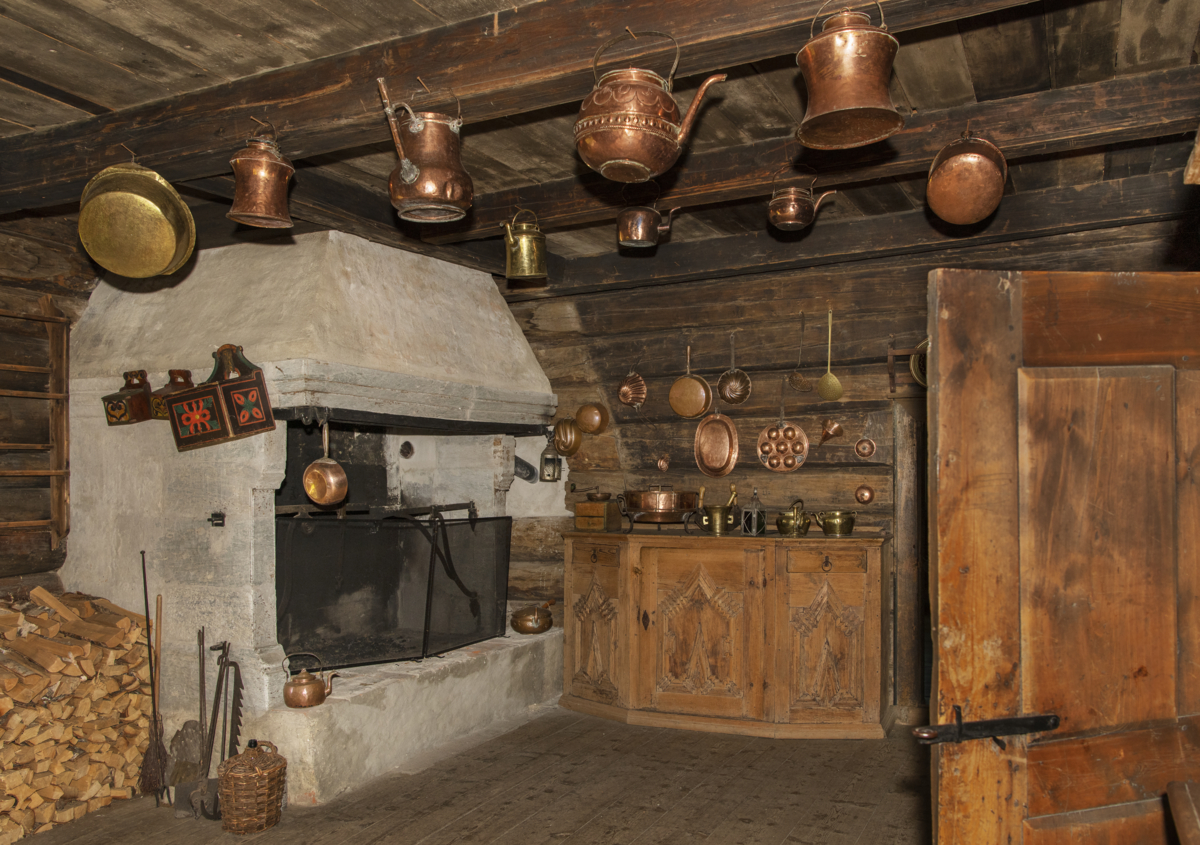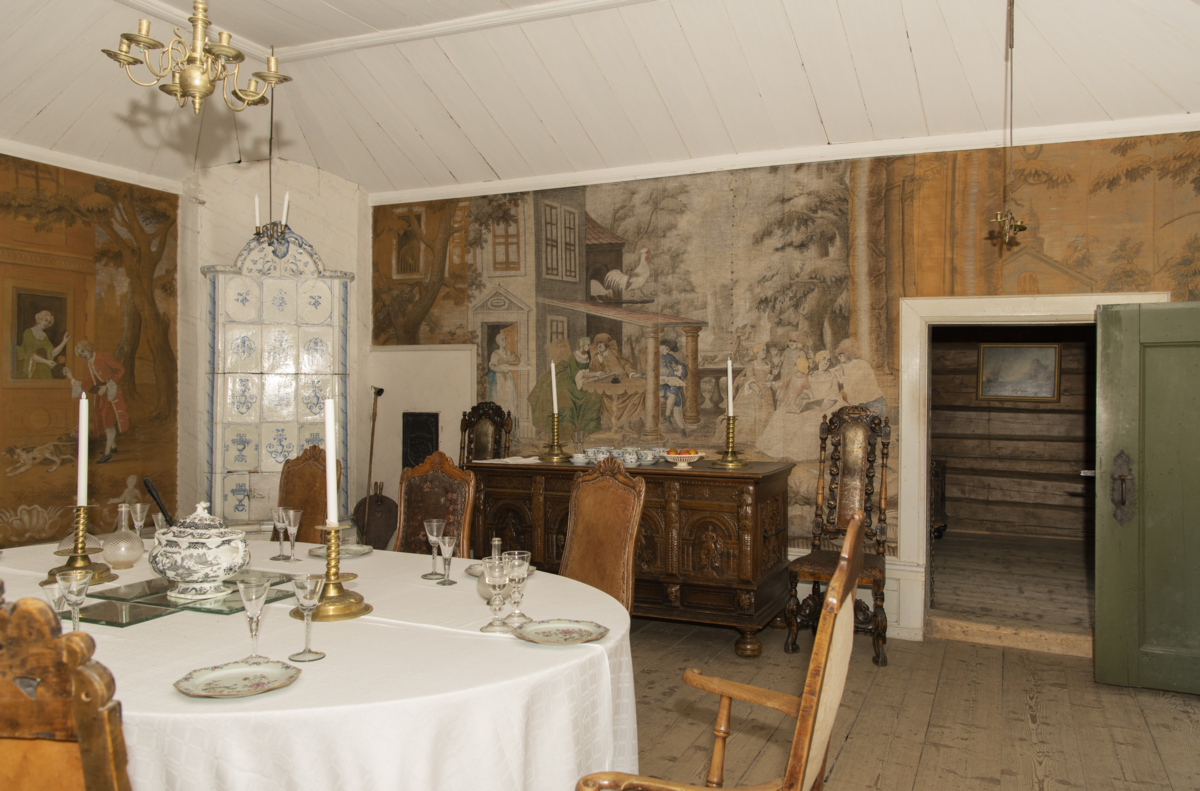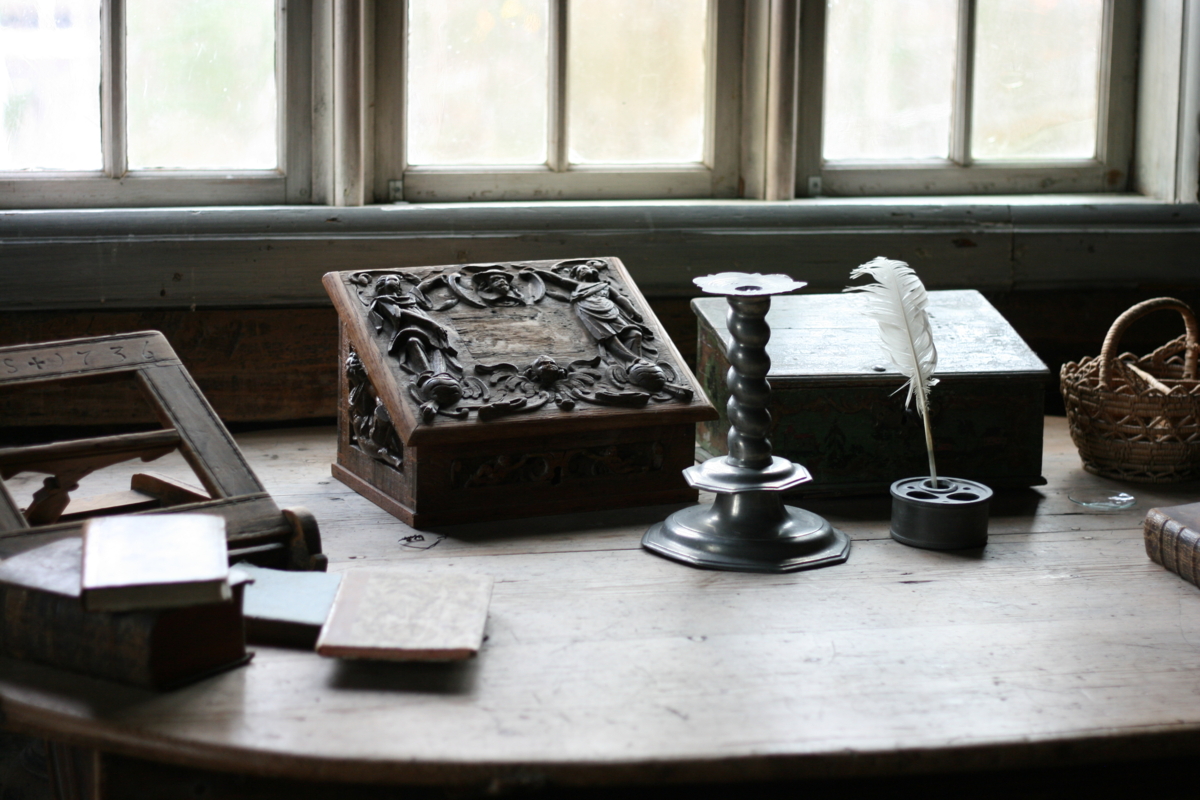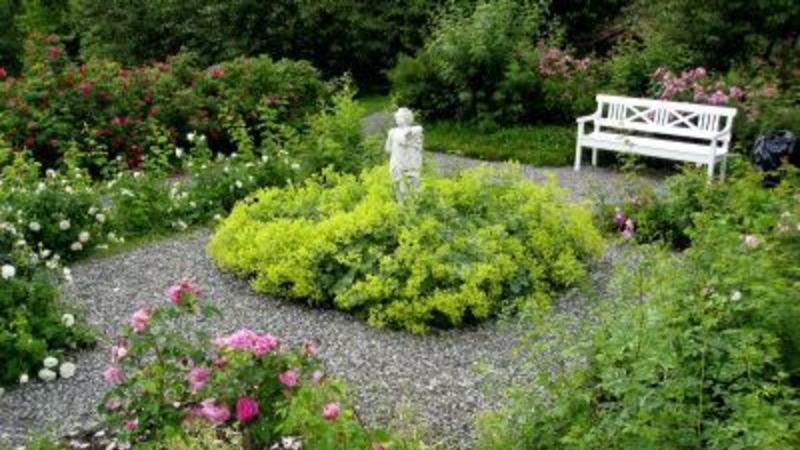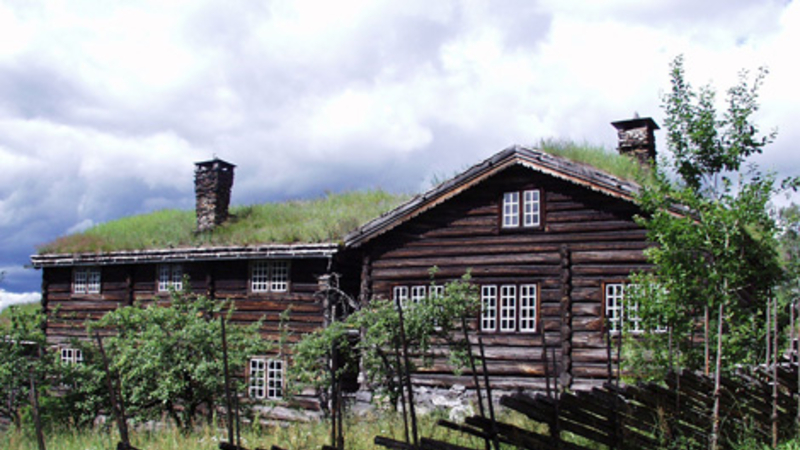
Photo: Tone Iren Eggen Tømte/Maihaugen
The Parsonage from Vågå
A Baroque gem in Gudbrandsdalen
In the 1690s, a new main building was constructed at the rectory in Vågå. This building was very modern for its time and took direct inspiration from Herregården in Larvik, the residence of the governor, Count Ulrik Frederik Gyldenløve. The rectory is a scaled-down version of a Baroque palace complex, similar to the Count’s palace in Copenhagen, and is the closest thing to a Baroque manor in Gudbrandsdalen.
Historical connections
Frederik Grüner was the priest in Vågå when the rectory was built, and his wife, Anna Hedvig, was the niece of Gyldenløve, a family among the most influential in the country. The rectory later became the home of the priestly families Munch and Storm, who for many years passed on the higher cultural standards of the elite to the local people. Many village girls received training in advanced cooking techniques as maids at the rectory.
Interior and furnishings
Today, the living room is adorned with a richly decorated 18th-century wallpaper, painted on coarse burlap to imitate tapestries. The wallpaper depicts scenes from the carefree life of the upper class, an ideal also pursued by the priest’s family, as seen by the clavichord near the wall. The rectory has a differentiated room layout with separate rooms for living, kitchen, bedroom, and study, in contrast to the all-in-one rooms of the common folk.
Movable furniture and the role of servants
At the rectory, the furniture is movable, unlike the wall-mounted cupboards and benches of the villagers. Chairs and tables can be moved as needed, and the table in the living room is placed in the center of the floor to allow space for servants to serve.
The kitchen – the servants’ domain
The kitchen was the servants’ workspace, where they ate and prepared food. The room is filled with copper pots, pudding molds, pewter plates, and ceramic jugs, reflecting a more advanced cooking tradition than that of the villagers. The large open hearth is designed for a big household, allowing two pots to cook simultaneously and a piglet to be roasted on a spit.
The duck house
The duck house in the northern lake also belongs to the parsonage. In the 18th and 19th centuries, parsons were pioneers, not only within farming and traditional animal husbandry, but on parsonage land there were often ducks, pigeons and bees too.

